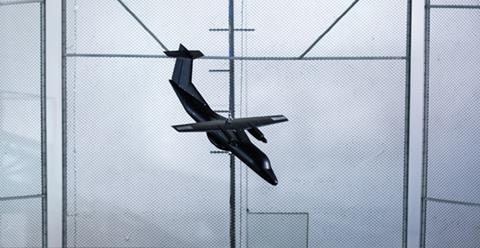Russian researchers have continued performance analysis of the proposed UZGA TVRS-44 Ladoga twin-turboprop, with assessment of unusual attitudes.
The aircraft is being developed as a response to short- and medium-range regional transport demand in the country.
Tests have been carried out at the Central Aerohydrodynamic Institute on a TVRS-44 model to explore high angle-of-attack and spin dynamics.
Analysts have identified “corkscrew” modes which occur if the flight controls deflect to certain positions, and looked how the flight changes when the aircraft’s balance and centre-of-mass are adjusted – as well as with various flap configurations.
“The more stable the ‘corkscrew’, and the greater the values of the angles of attack and angular velocities, the more difficult are the piloting methods to [recover],” says the institute.

“We established at which positions of all the controls it is possible to have stable aircraft spin modes,” says Denis Dets of the institute’s rotorcraft research division.
“Various methods of piloting the aircraft to recover from these spin modes have also been explored.”
He says methods have been established to “ensure the exit” of the aircraft from a spin, which can be used to draw up criteria for high angle-of-attack and stall testing.
Intended to accommodate 40-50 passengers, the TVRS-44 is scheduled to enter production in 2025.


























